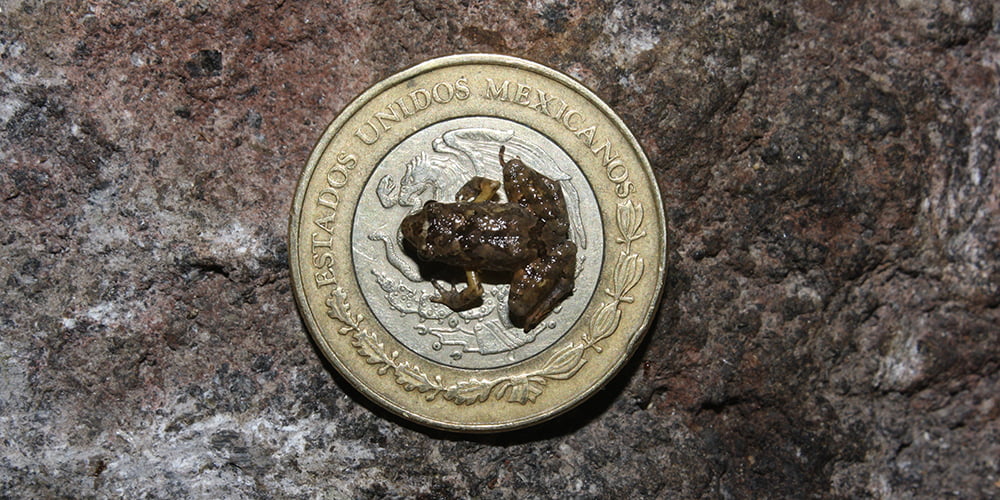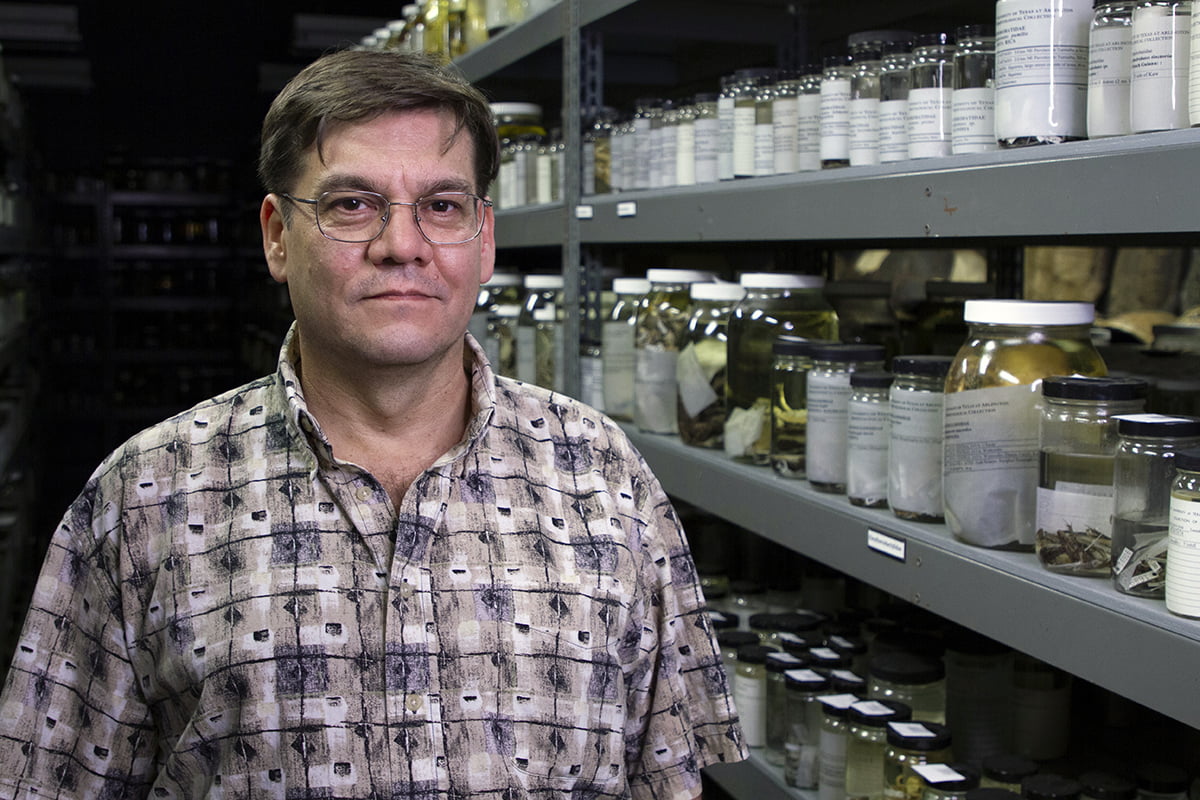Six new species of miniature frog discovered

Eric Smith, a professor of biology at The University of Texas at Arlington, and a team of international researchers have discovered six new species of miniature frogs in Mexico.
These amphibians are so tiny that they fit on top of a Mexican coin with room to spare. Fully grown, none of the new species exceed 15 millimeters, placing them among the smallest frogs in the world.
Smith and researchers from the University of Cambridge and London’s Natural History Museum published the discovery in the journal Herpetological Monographs.
“Biodiversity research tends to focus on big, charismatic animals and can neglect smaller species,” Smith said. “Because of this, these little frogs went undetected for a very long time.”
To achieve their miniature stature, the species evolved to retain their juvenile characteristics in a process known as pedomorphosis. Over time, the amphibians began to reproduce at earlier and earlier stages of development, limiting their adult growth.
Apart from their size, other factors complicated researchers’ ability to study the diminutive creatures. Found in Guerrero and Michoacan, some of the species live in territory occupied by armed groups who operate independently of the government and are responsible for widespread crime and violence. Throughout his career, Smith said, the amount of biodiversity research conducted in Mexico has declined.
The study, “Miniaturization in Direct-Developing Frogs from Mexico with the Description of Six New Species,” recommends that each of the new species be classified as endangered due to the declining quality of their habitat and their limited distribution across subtropical and tropical regions.

These creatures inhabit a very narrow range among the leaf litter on the mountainsides,” Smith said. “If you hike too far too quickly, you could miss them completely.
Smith, a taxonomist, began collecting the species when he was just a graduate student. Years later, he distinguished the frogs from known species by their outward appearance and the structure of their bones and organs. His former doctoral student, Jeffrey Streicher, who is now the senior curator in charge of amphibians and reptiles at the Natural History Museum in London, performed the species’ genetic analysis at UTA.
Despite the progress they’ve made identifying new species, more research is needed to understand the diversity of miniature amphibians in Mexico, Smith said.
“Our sampling efforts are limited in western Mexico and east of the Isthmus of Tehuantepec, but we are already aware of more new species from this group that need to be described.”
--
The UTA College of Science, a Texas Tier One and Carnegie R1 research institution, is preparing the next generation of leaders in science through innovative education and hands-on research and offers programs in Biology, Chemistry & Biochemistry, Data Science, Earth & Environmental Sciences, Health Professions, Mathematics, Physics and Psychology. To support educational and research efforts visit the giving page, or if you're a prospective student interested in beginning your #MaverickScience journey visit our future students page.